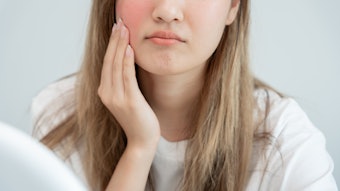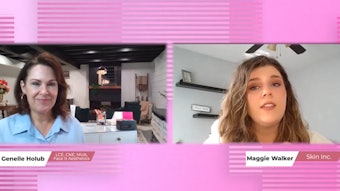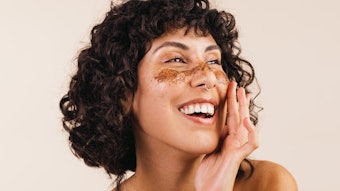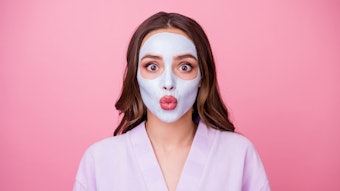| NANCY JEFFERIES addresses how the changing notions toward beauty and aging are being reflected in the cosmetics industry. Jefferies is a contributing editor for Global Cosmetics Industry (GCI) magazine, the business magazine for the global beauty industry. She covers the industry from her New York vantage and has been in the publishing business for more than 20 years. Her introduction to the cosmetics and personal care industry began as editor of GCI magazine from 1997–2000. |
Science, philosophy and evolution have ushered in a new and long overdue perspective on aging. Considering the size of the baby boomer market, the influences of cultural diversity and the predictable power of a historically momentous generation to effect change, it is little wonder perspectives are shifting. It has been said “50 is the new 30,” and advertising man Donny Deutsch (The Big Idea, November 10, 2006) has said, “Take age off the table and extend your brand.” Realizing that sentiment at face value, the face of aging is being redefined, and today’s beauty marketers are partially responsible.
The power of the particular demographic around which the entire anti-aging category centers cannot be underestimated. Characteristically, the boomer generation hasn’t remained silent and demure about anything, and aging skin, less-than-perfectly-taut-and-toned bodies, and graying manes cannot reduce this segment of the population to invisibility. One glance at the movers and shakers in the beauty industry frequently finds incredibly talented, seasoned professionals at the helm. And while the silver screen may be largely inhabited by ingénues, icons of Hollywood, politics, theater, music, art and literature are increasingly those whose beauty exemplifies lives well-lived.
Worldwide, the forecast market for anti-aging and nourishing products in 2010 is expected to be $15.8 billion. As of 2005, the current world figure for anti-agers and nourishers is $11.3 billion, not an insignificant sum. An evolved approach to tapping into this demographic is stirring the imaginations of marketers and stimulating consumer spending.
Media offers the message
More magazine has featured Susan Sarandon, looking fabulous at 59, and Sharon Stone, “Fiery at 48,” on its cover, providing a defining perspective on a generation of women who are empowered, confident and resourceful. Lois Joy Johnson, beauty and fashion director of More, offered these insights into the new face of beauty.
On marketing to consumers over 40, Johnson says, “Products that target the skin, hair and makeup concerns of women over 40 have been around for decades, but the dramatic increase in the number of products available at every price point shows just how powerful this consumer demo is to beauty brands. The intrigue about what’s new and what’s best never slacks as thousands of new anti-aging options a year get our attention.”
Johnson notes that product appeal has moved beyond basics. “If it firms, brightens, smoothes, fills or plumps we’re interested. If it has antioxidants, botanicals and increases glow or radiance, we’re ready to plunk down our credit cards. Even categories like shampoos, conditioners and hair color have moved beyond basics and are packed with vitamins and botanicals that counteract thinning, chemical processing and heat styling. There has been an expansion of luxury products for this consumer, who has the money to afford pricey products like face creams for $350 and upward if she chooses. Dermatological and spa procedures like microdermabrasion, peels, hair masks, tooth-whitening kits, body polishers and wrinkle relaxers are part of the at-home arsenal now and appeal to time-crunched women who work and want to maintain their looks easily,” says Johnson.
Women today are celebrating their individuality, empowerment and confidence with beauty that goes way beyond a one-dimensional definition. Johnson adds, “When it comes to advertising, nothing gets our attention better than our peers, so it’s no surprise that 40-plus celebrities are the newest hot faces for ad campaigns. As long as the attitude and image is age-celebratory and the message is ‘We’re clearly not trying to look 25 again,’ we love it.”
The major cosmetic manufacturers got things rolling with Susan Sarandon and Julianne Moore as spokeswomen for one company, and others celebrities, such as Sharon Stone, Diane Keaton and Christie Brinkley have followed. It’s reassuring that most of these women are imaged in a realistic way. Keaton, for example, is not retouched for her ads, and the positive response from women to the ads has been overwhelming.
Academy Award-winning actress Keaton signed to an exclusive contract as a spokesperson for one cosmetic company and its brands in May 2006, and says, “I love that the company’s products are found all over the world and are made for women of all ages, and for women of all skin and hair colors.” The message is inclusive and empowering. Coming from a woman who has won accolades as a performer, director and producer, it communicates both success and authenticity.
The company’s TV ads, which feature Keaton in her signature white pantsuit, show the 60-year-old speaking directly to the viewer, sharing her beliefs in aging authentically and using this company’s products to make her skin resilient, more toned and redensified.
“We have had an incredible response from so many women to the news that Diane Keaton signed as a spokesperson,” says Carol Hamilton, president of the L’Oréal Paris division of L’Oreal USA, Inc. “Diane is an exemplary role model for women in every stage of their lives, and especially for women of her generation. She possesses such a luminous beauty and personality, is incredibly smart and truly cares about how women feel about themselves.”
“Advertising is gearing more toward the 40-plus market in the beauty and health arenas, and there has been a real need created by the market,” says Johnson. “Our readers tell us they have never looked better. Most say they never looked this good in their 20s or 30s, and the reason is a focus on nutrition and fitness, better skin care and the self-knowledge and confidence that comes with age.”
Redefining beauty
Cosmetic companies are part of a progressive environment that surrounds the marketing and promotion of the new face of beauty, and products addressing aging skin have gone hand in hand with the personification. Beyond technology and scientific research, however, is the positioning of a product and brand, and the emotional connection that is created with consumers.
Caroline Pieper-Vogt, senior vice president of marketing, Clarins USA, notes the importance of looking at this consumer and understanding what she is experiencing at this time in her life. “We take into account the needs of her skin and the physiology of skin at a mature age. We also look at her emotional needs and her lifestyle preferences. Her needs in these areas are certainly different than when she was younger, and we take them into consideration when it comes to formulations, packaging, product texture and size,” she says.
The customers Clarins addresses are within three different maturing age groups—women in their 30s, 40s, and 50s-plus. “The skin is extremely different at these stages, and women see themselves very differently in these decades,” says Pieper-Vogt. “With our anti-aging products, we delineate first by a woman’s age and then by a specific need at that age. Needs become more specific with age and our products become more targeted as well.”
A spokesmodel who captured the attention of baby boomers and has journeyed along with this generation, Christie Brinkley, graces print advertising for liquid makeup which states simply, “Look as young as you feel.”
Every woman can be beautiful
In the immortal words of Estée Lauder, “Every woman can be beautiful,” and, indeed, that is the leitmotif of the Lauder beauty philosophy. It has served millions of women well, and continues to weave its magic for women in any and every stage of life.
According to Marjorie Lau, marketing vice president with Estée Lauder North America, “Beauty is not about chronological age.” Lau states that their core customer is over 35, and the focus is more on health, feeling good and looking your best at any age.
Consumers are diverse, and while some select basic cosmetics, others have more complex needs. Now products are being designed to address those needs. “It all has to do with a person’s attitude and how they define aging for themselves,” said Lau.
Exploring the marketing messages of these top brands has revealed a striking consensus. Women of all ages are not only unique and beautiful, but are entitled to their dreams, aspirations and accomplishments. As the one company’s message reiterates, “Of course, we’re worth it,” and, despite outdated sentiments relegating women of a certain age to relative obscurity, the new face of beautiful aging has emerged with a new face of confidence. Women, regardless of age or interests, form a beautiful, global community. Although new technology, innovative products and positive marketing have validated that perception, everyone knows that true beauty still comes from within.










